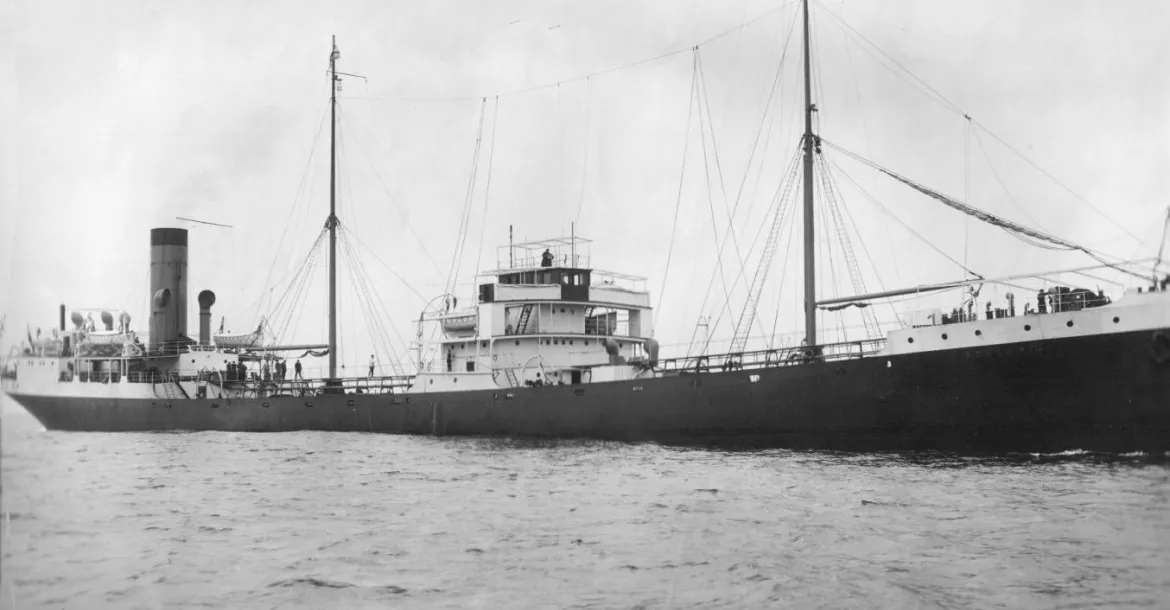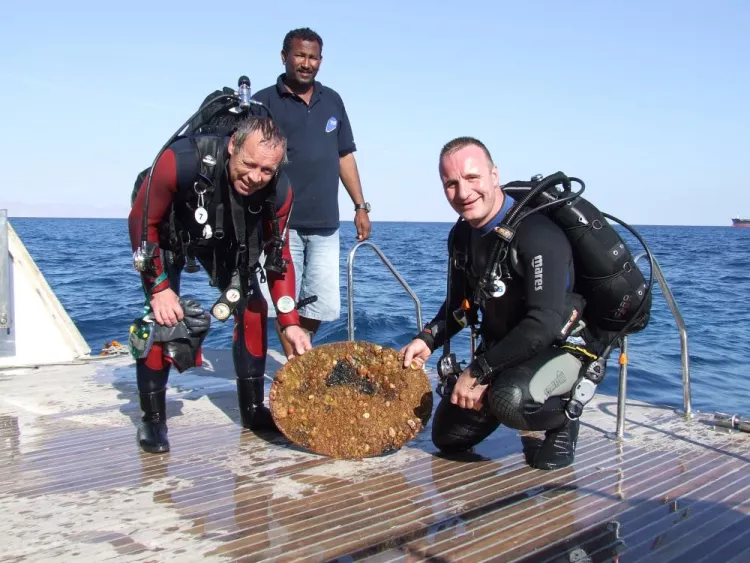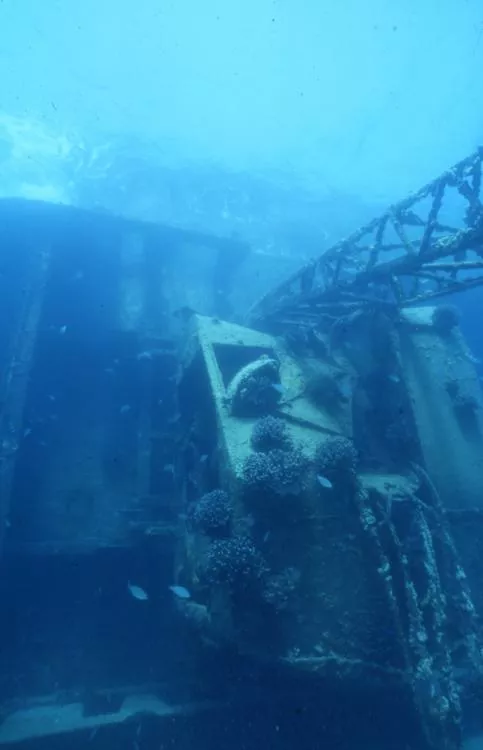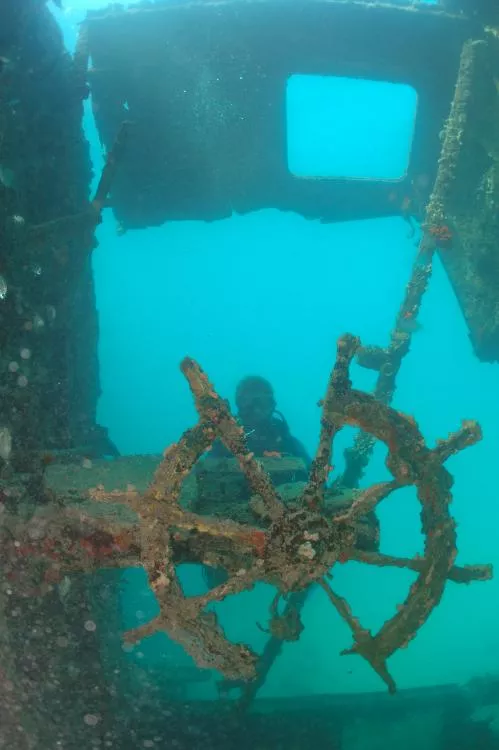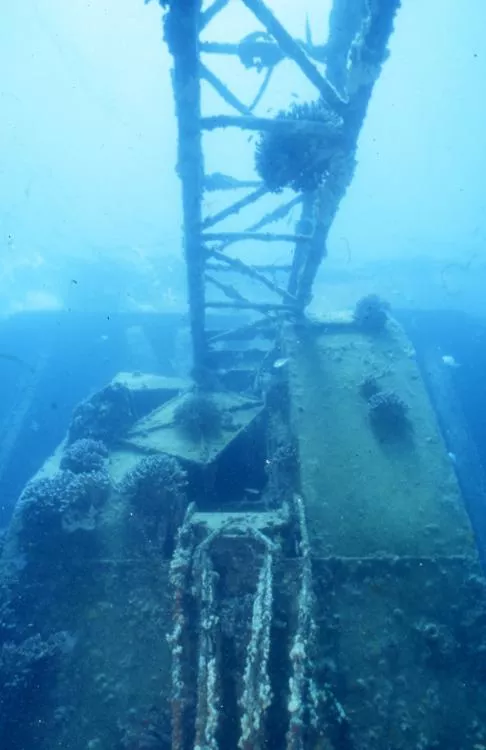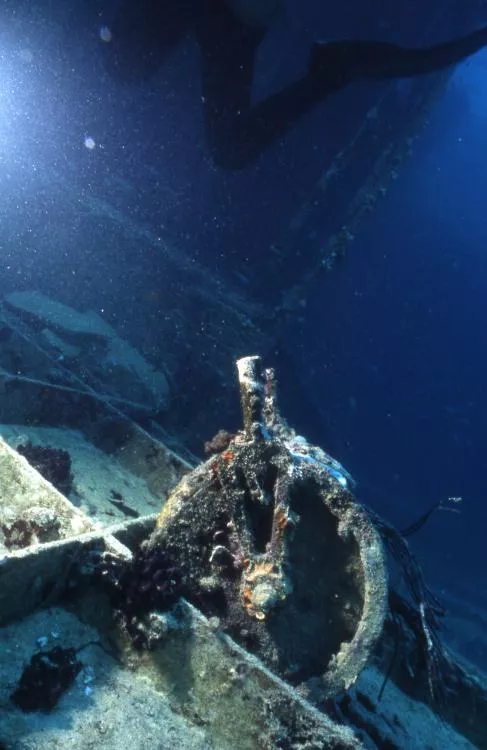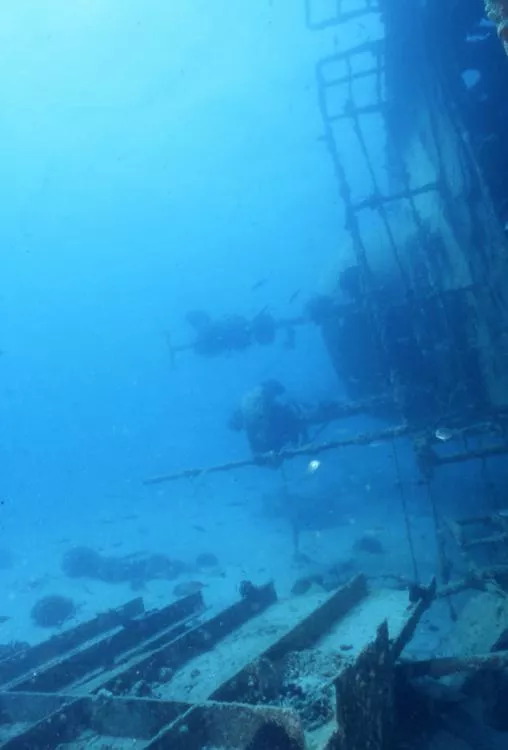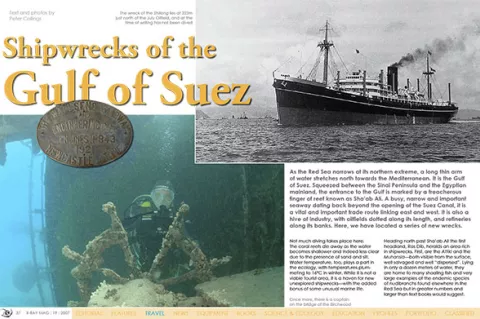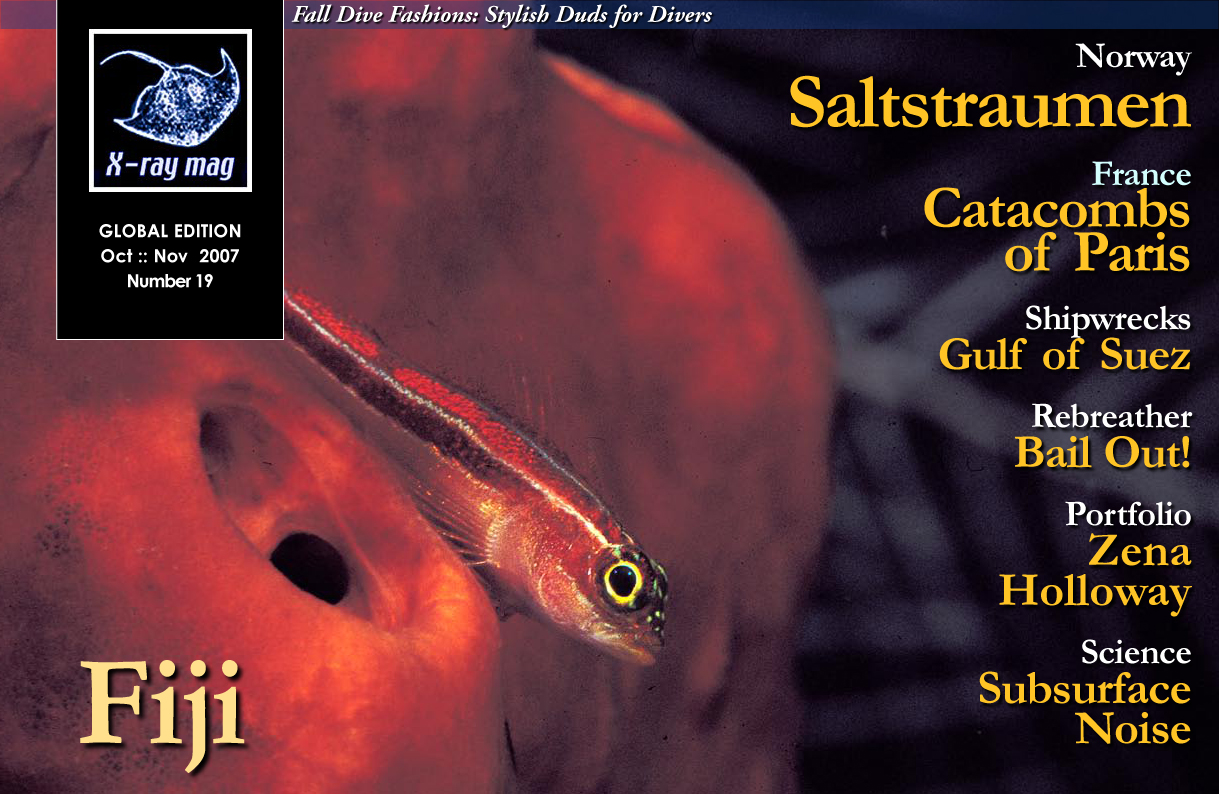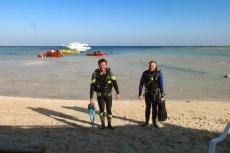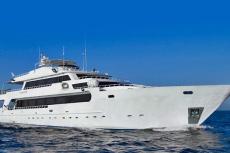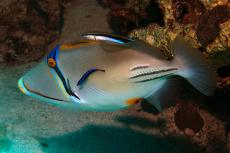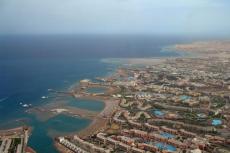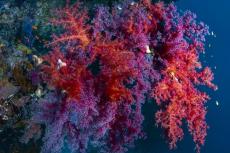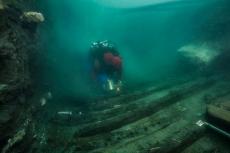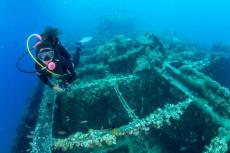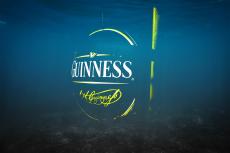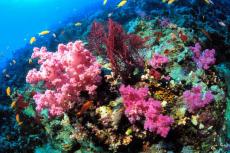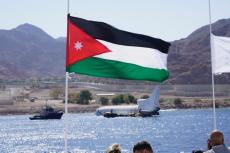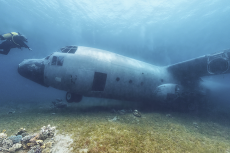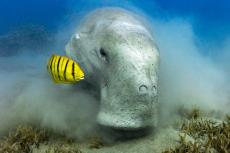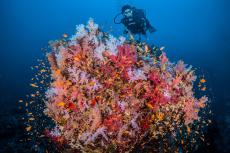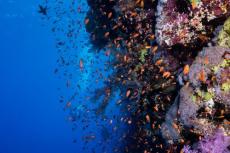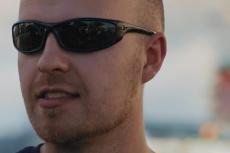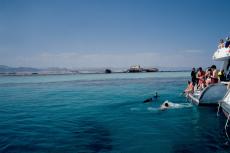As the Red Sea narrows at its northern extreme, a long thin arm of water stretches north towards the Mediterranean. It is the Gulf of Suez. Squeezed between the Sinai Peninsula and the Egyptian mainland, the entrance to the Gulf is marked by a treacherous finger of reef known as Sha’ab Ali.
Contributed by
As the Red Sea narrows at its northern extreme, a long thin arm of water stretches north towards the Mediterranean. It is the Gulf of Suez. Squeezed between the Sinai Peninsula and the Egyptian mainland, the entrance to the Gulf is marked by a treacherous finger of reef known as Sha’ab Ali. A busy, narrow and important seaway dating back beyond the opening of the Suez Canal, it is a vital and important trade route linking east and west. It is also a hive of industry, with oilfields dotted along its length, and refineries along its banks. Here, we have located a series of new wrecks.
Not much diving takes place here. The coral reefs die away as the water becomes shallower and indeed less clear due to the presence of sand and silt. Water temperature, too, plays a part in the ecology, with temperatures plummeting to 16°C in winter. While it is not a viable tourist area, it is a haven for new unexplored shipwrecks—with the added bonus of some unusual marine life. Heading north past Sha’ab Ali the first headland, Ras Dib, heralds an area rich in shipwrecks.
First, are the Attiki and the Muhansia—both visible from the surface, well salvaged and well “dispersed”. Lying in only a dozen meters of water, they are home to many shoaling fish and very large examples of the endemic species of nudibranchs found elsewhere in the Red Sea but in greater numbers and larger than text books would suggest. Rounding the headland, we find the Elliot, her superstructure above water is well embedded into the reef, her headlong grounding evident from the attitude of her rudder.
Divers can enter the hull, swim through and into the engine room and take a walk around. Half a mile offshore where the water is deeper and clearer, lie three modern merchant ships—as yet unidentified—in less than 50 meters of water. Discovered during the 2004 Geoserve/SSS Expedition, their secrets are yet to be unlocked and their stories yet untold.
At Ras Shukier, the hustle and bustle of the oil industry becomes very evident. Close to shore are two shallow wrecks, while again offshore there are several deeper wrecks.
Birchwood 11 (Plastics Wreck)
Lying to the north of the port in a large bay with three other wrecks there is a small 50 meter motor cargo ship lying on its starboard side in 12m of water. Totally intact, light streams into the holds and bathes the entire wreck. A shoal of juvenile barracuda circles her mast, which is complete with radar array and aerials.
Just forward of the superstructure itself at the aft of the vessel is an intact crane, obviously used to service the hold. The criss-cross framework of the jib is covered with encrusting life. Superb swim-throughs from the weather deck into the holds are easily accomplished, her cargo bags of polythene granules float hard against the port hull.
The fo’c’s’le is easy to access and explore, and her winch gear, like many parts of the wreck is covered in sponge and encrusting corals. Her bow appears intact and a deep scour ran along her keel, becoming circular by her prop and rudder. Her starboard running light lies protruding from the sand.
Hundreds of nudibranchs smother the red sponge fingers found throughout the wreck. Shoals of rabbit fish huddled together everywhere. Snowflake morays, again a rare occurrence on a coral reef, are common place here. Almost every surface of the wreck is alive with anemones, sponges and small crustaceans. The brilliant reds, oranges and greens highlighted by torch beams.
Laura Security (The Eagle Wreck)
Close by, this 40m long vessel sits upright with its bridge out of the water. It is named after the eagle, which made its roost on top of the wreck. Many of the hull plates have fallen to the seabed allowing sunlight to stream through its vertical supports highlighting shoals of fish.
The strong sunlight, afforded by the shallow depths, provides endless photo opportunities. With the hull intact, the bow and stern are very photogenic, and the supporting fish life is quite amazing. Due to its location, the wreck is blessed by the afternoon sun and the long beams of light shine through many holes in the wreck. Those who are not put off by the lack of depth are well rewarded.
The “Pd” Wreck. (D.b. Gemini)
The target area of the SSS survey revealed some strange wreckage on the seabed, including a large circular depression. No wreck was ever found but winches, ladders mooring cleats, ventilation cowls covering a vast area—all attracting a reef’s population of fish—was all that could be seen.
The aforementioned depression is complety round some two meters deep. it seems man-made and full of snapper and jacks so perhaps this is the answer.
The American jack-up drilling barge Gemini was damaged while drilling off Ras Shukier. The sea bed collapsed under one of the legs on October 8th, 1974. Eighteen people died. During salvage operations, it rolled over almost capsizing, bending all its legs. It was written off as a total loss at a cost of £4.1 million, removed and broken up.
Wreck of the Shillong
Built at Vickers Armstrong, Walker Mar 1949, for the P&O LINE, the Shillong was 8934 tons and 522 ft long. She was captained by E.J. Spurling and on a journey from London over Hamburg to Tsingtao with 87 crew and six passengers and carrying general cargo, when she collided with the Purfina Congo.
She now rests in 223m, just north of the July Oilfield, in the separation channel, and at the time of writing, has not been dived. Hopefully, our forthcoming expeditions will locate her.
Ras Gharib
This headland again is a terminal for the oil industry and marks the limit of diving exploration. To the best of my knowledge, no one else has ever been diving this far north. But there is evidence to suggest at least another 20 wrecks are lying in these waters. Again, there are several very interesting wrecks in shallow water with more lying in deeper water.
Aboudy
A small aluminum hulled, 400ton cargo ship 76m long, sank May 7th, 1988. She was carrying a cargo of cattle, aluminum extrusion and thousands of 300ml bottles of cough medicine! Laying on her side totally intact, her masts running horizontal towards the shore, her stays still in place, she is slowly succumbing to the invasion of marine life. The entire wreck can be explored, sheltered from any swell from the exposed open sea. Remnants of the cargo lie in the holds spilling out onto the seabed, and a diver can swim from the fo’c’s’le through her holds to the bridge section at the stern, where the engine room can also be found.
Marine life includes shoaling barracuda and fusiliers, emperor angle fish, crocodile fish, torpedo rays and encrusting corals and sponges. Visibility is subject to swell, as the seabed consists of sand.
Bahr
The motor survey vessel belonged to the United Arab Republic General Petroleum Co was sunk at Ras Gharib by Israeli missiles on October 14th, 1973, during the Yom Kippur War. Russian built, she was 416 tons, 147 ft long. She lies in only 14m of water.
Scalaria
Built in 1922 for the Anglo-Saxon Petroleum Co at Swan Hunters, this 5683 ton steam tanker was attacked by enemy aircraft using aerial torpedoes and bombs while off Ras Gharib with a cargo of dirty oil. She was sunk on October 19th, 1942, with the loss of 11 lives. Her captain, J.Waring survived.
One of the ships officers, Mr Armatage, was awarded the George cross and the Lloyds medal for his actions in saving the lives of his fellow crewmen as they clung to her anchor chain, surrounded by burning oils. She was 411 ft long, 55 ft beam and 30 ft draught, capable of ten knots and fitted with triple expansion engines. She lies in shallow water, with only the lower hull remaining having been dismantled below the waterline. ■

